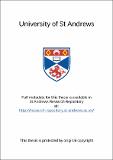Structural studies into the mechanism of substrate binding and catalysis in a promiscuous hyperthermophilic aldolase
Abstract
Sulfolobus solfataricus is a hyperthermophilic archaeon that grows optimally between 80 and 85°C. It metabolises glucose and galactose by a promiscuous variant of the Entner-Doudoroff pathway, in which both a non-phosphorylative and a part phosphorylative branch have been proposed to operate in parallel. A single, broad specificity aldolase (SsKDGA) has been shown to catalyse the C-C bond cleavage of intermediates arising from both sugars, in either of the branches. The structure of this enzyme has previously been solved by MAD-phasing of a SeMet derivative, confirming that it belongs to the N-acetylneuraminate lyase (NAL) subfamily of type I aldolases. The current study has focused on the investigation of SsKDGA's mechanisms of substrate binding and catalysis. The resolution of the apoenzyme model has been extended from 2.5 to 1.7 A, using native crystals grown at physiological pH, and a detailed characterisation of the active site region has been carried out. Also, high resolution complexes have been obtained of the aldolase with its natural substrates as Schiff base intermediates. These structures have afforded a better understanding of SsKDGA's promiscuous activity and permitted mechanistic comparisons to be made with other type I aldolases. The insights gained are providing the means by which a rational design approach can be used to tailor the enzyme's selectivity. So far, work has focused on dissecting SsKDGA's catalytic mechanism and inducing stereocontrol in the condensation reaction. However, the potential for generating novel aldol products has also being examined.
Type
Thesis, PhD Doctor of Philosopy
Collections
Items in the St Andrews Research Repository are protected by copyright, with all rights reserved, unless otherwise indicated.

